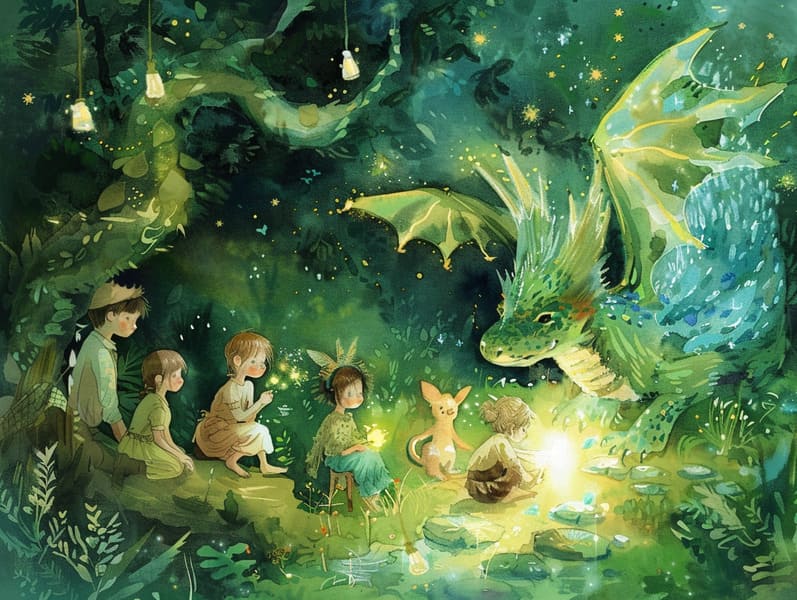The Origins of Children's Fairy Tales and Its Unwavering Captivation.
The Origins of Children's Fairy Tales and Its Unwavering Captivation.
Blog Article

Best fairy tales have deep roots. These narratives have been narrated from one generation to the next well before they were ever recorded. They developed from a variety of societies, including Indigenous traditions. They were initially told among elders, often carrying themes and messages pertaining to the societal norms and beliefs of the time.
The renowned Brothers Grimm, Jacob and Wilhelm (the Grimm brothers), were among the first to gather many of these beloved stories. Their published works, "Grimm's Fairy Tales," included tales like "Cinder Maid," "Hansel and Gretel," and "Snow-White and Rose-Red," which have since become staples in the world of traditional fairy tales. Similarly, the Danish author's magical fairy tales, such as "The Little Mermaid," and "The Duckling's Story," have stolen hearts worldwide, solidifying their place in the pantheon of treasured fairy tales.
Even though they are old, classic fairy tales remain as relevant as ever, especially as children's night stories. These charming stories are now available in numerous formats, including richly illustrated books, captivating animations, and internet fairy tales.
Their persistent charm can be credited to several captivating elements:
Ethical Lessons: Traditional fairy tales often present important moral lessons. Fairy tales like "The Story of the Boy Who Cried Wolf" teach the merit of honesty, while "The Tale of the Tortoise and the Hare" demonstrate the qualities of tenacity and modesty. These tales offer kids clear distinctions between truth and falsehood, forming their moral compass in a kind yet lasting way.
Compassion and Knowledge: Traditional fairy tales frequently include heroes facing problems and hurdles, fostering readers to empathize with their struggles and support their triumphs. For instance, "The Story of Beauty and the Beast" emphasizes the necessity of looking beyond appearances to realize the real character of a individual, developing kindness and discernment.
Cultural Comprehension: Many traditional fairy tales are steeped in the cultural contexts from which they sprang. Learning from these narratives can provide delightful insights into different beliefs, cultivating a sense of world insight and understanding.
Inventiveness and Imagination: The mythical elements in old fairy tales—talking animals—stimulate children’s visions and dreams. These fairy tales transport readers to fantasy realms, unleashing creative dreams and a sense of excitement that persists a lifetime.
Old fairy tales are not only charming but also enlightening. They provide captivating tools in building various cognitive and affective skills in kids. When classic fairy tales are voiced, they develop speech development by introducing new terms and here meanings and sophisticated sentence structures. This practice also boosts auditory skills and attention, as children listen intently, prepared to see what happens next.
Furthermore, contemplating the themes and characters of ancient fairy tales can nurture logical thinking and critical thinking. Kids are educated to pinpoint patterns, expect results, and get cause and effect. These examinations also facilitate young readers utter their thoughts and feelings, boosting their emotional intelligence.
In today’s technological era, the proliferation of online storybooks has made these fairy tales more available than ever. Digital sites and online apps make available comprehensive collections of timeless fairy tales that can be looked at or listened through anytime, anywhere. Fairy tales spoken are particularly prevalent, sharing an charming way for young readers to be a part of these alluring stories. Voice books and read-to-me videos guide characters and settings to life, often enhanced by charming musical scores and harmonies that heighten the tale journey.
The persistent attraction of traditional fairy tales lies in their ability to alter to new eras while preserving their essential themes. Contemporary versions of these fairy tales often spotlight more multicultural figures and modern settings, making them meaningful to today’s audience. However, the basic principles of valor, compassion, and equity remain unchanged, continuing to influence audiences of all ages.
Fairy tales also offer a sense of contentment and knownness. They present to a well-structured narrative with a unmistakable beginning, middle, and end, often winding up with the ending of conflicts and the triumph of right over wrong. This assuredness can be calming for little ones, gifting a sense of steadiness in an variable world.
Ancient fairy tales continue to bewitch and train new generations, maintaining their fascination and pertinence in modern society. As nighttime stories for kids, they provide a perfect blend of allure and teaching, nurturing moral values, empathy, and creativity. The proliferation of internet fairy tales and the prevalence of fairy tales voiced promise that these timeless tales remain reachable to new generations.
By continuing and relating these tales, we continue to exalt the rich tapestry of creativity and cultural heritage. Whether you are delving into a vibrantly illustrated book, seeing a virtual library, or listening through an read-aloud story, the elegance of ancient fairy tales is always within reach. These fairy tales show us of the lasting force of tales and its ability to connect us across eras and regions.
If you are seeing a richly illustrated book, viewing a web-based library, or listening to an spoken story, the fascination of children's fairy tales is always within reach.
These narratives emphasize of the perpetual magic of tales and its ability to join us across time and space, making a tie that enchants and educates alike.